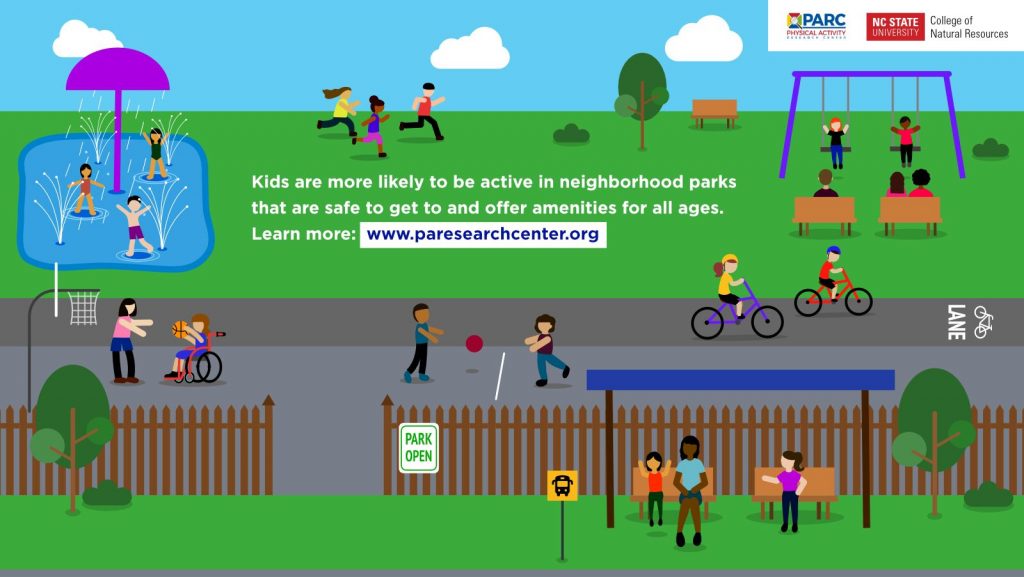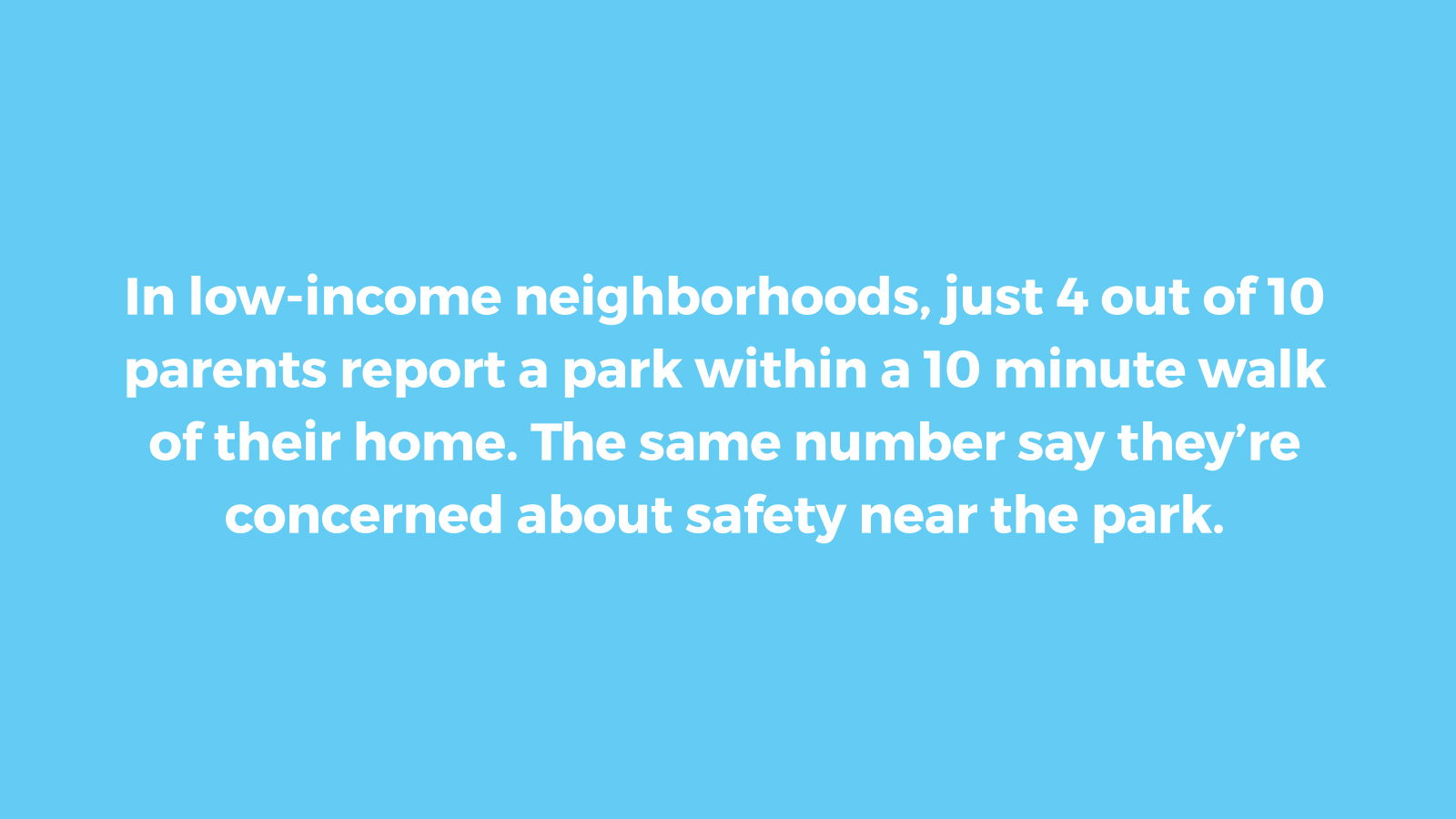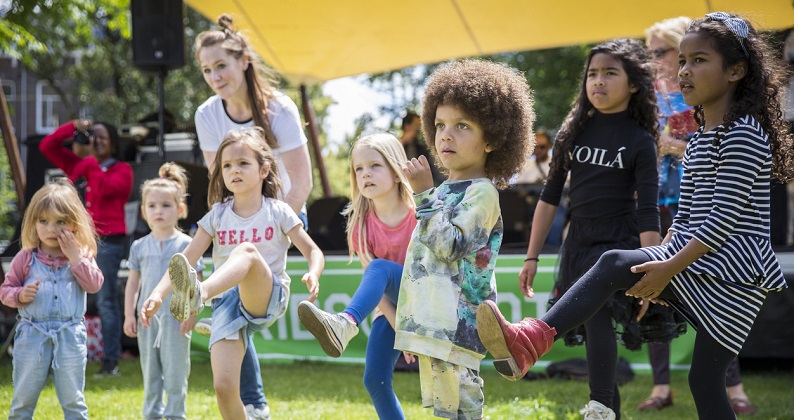Public parks represent key settings for promoting physical activity among children who are least likely to be active and most likely to be overweight or obese. Describing park use patterns among different racial and ethnic groups, particularly in low-income neighborhoods, can inform planning decisions on how to meet diverse recreation needs and advance public health goals. Data collection focused on 20 parks in New York City (Asian and Latino) and 20 neighborhood parks in Raleigh-Durham (African American and Latino). Systematic observations using SOPARC were used to measure children’s use of parks and park-based physical activity across all 40 parks. Parks, as well as surrounding neighborhoods, were audited to identify and describe environmental supports for, and barriers to, physical activity
A 2-page lay summary of these results is available for use and dissemination.
SHARE WITH YOUR COMMUNITY
This infographic highlights how communities can encourage park use.
We encourage you to download and share the infographic with your community partners and networks.


